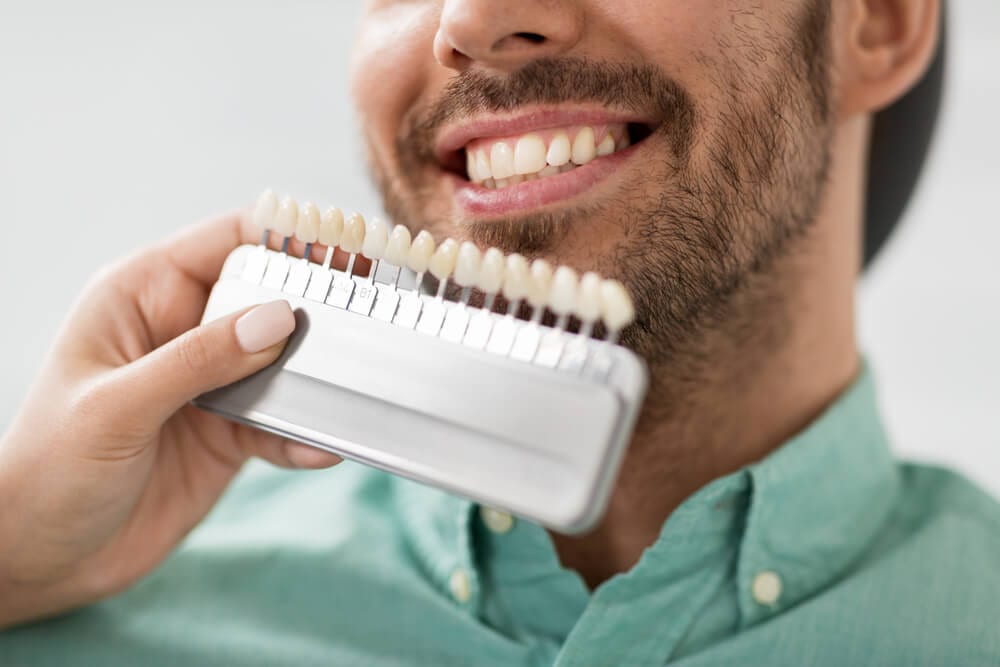With advances in cosmetic dentistry there are treatment options for patients who want to correct cosmetic flaws. Porcelain veneers is one such treatment to improve the appearance of teeth, wherein thin shells of veneers or dental laminates are bonded onto the front of the teeth. Porcelain veneers are permanent and are durable, lasting for many years with proper hygiene and proper dental care.
Porcelain is a translucent material, similar to the enamel of our teeth, and the veneers made of porcelain are about .5 to .6 mm thick, with half the thickness of a dime. Porcelain itself maybe inherently brittle, but when it’s firmly bonded to the hardy tooth, it helps produce a very strong and sturdy surface. Porcelain veneers despite being so thin, can withstand daily wear and tear well, and is also highly resistant to stains. Porcelain veneers are good for correcting the following cosmetic dental problems:
- Somewhat crooked teeth
- Little spaces between teeth
- Minor bite alignment issues
- Broken or chipped teeth
- Tooth discoloration and stains
Uses of Porcelain Veneers
Porcelain veneers offer a solution to teeth that are chipped, crooked, worn, or discolored.
- a) Restoring minor tooth defects.
Many patients have teeth that show visible signs of wear, chips or imperfections like dimples or pits, which can be repaired with porcelain veneers. If the affected area is localized, dental bonding is preferred by dentists as it is less invasive process. But if there is substantial area of the front of the tooth showing dental imperfections then resurfacing with porcelain veneers may be the better choice. Porcelain laminates are durable, stain resistant and look almost like natural teeth.
- b) Give stained fillings a new look.
Dental fillings will stain and will wear with time. But the ceramic surface of a porcelain veneer can remain stain free for longer, providing aesthetically pleasing brighter teeth and smile. Veneers are cemented to the tooth to create a stronger bond with pre-existing composite or your dentist may decide to replace your old filling before placing new veneers. This improves the endurance of your veneers as the attachment with the filling is much stronger.
- c) Making color changes for teeth.
Teeth may discolor from tetracycline or fluorosis staining, or may darken from trauma or even root canal treatment. Porcelain veneers provide an easy solution for a quick color change. When the teeth structure is good but it needs a color change, then dentists prefer to apply porcelain laminates on them to lighten the color of teeth. But if the teeth being treated are exceptionally dark then it may be better to opt for teeth whitening treatment first, to light the teeth before placing veneers on them or to choose dental crown treatment.
- d) Quick orthodontic fixes.
1) Porcelain veneers are often used to close spaces between a person’s teeth.
2) When a patient’s teeth are not misaligned too severely, veneers are an option for making their teeth appear even and to make their smile more pleasing. Where the teeth are majorly crooked, veneers may not be the ideal treatment choice, as the preparation to fit a veneer could be too aggressive in order to make them evenly. These severely crowded cases will require other orthodontic treatment, which can be enhanced by placement of veneers after.




